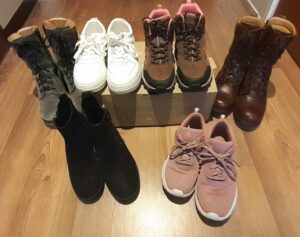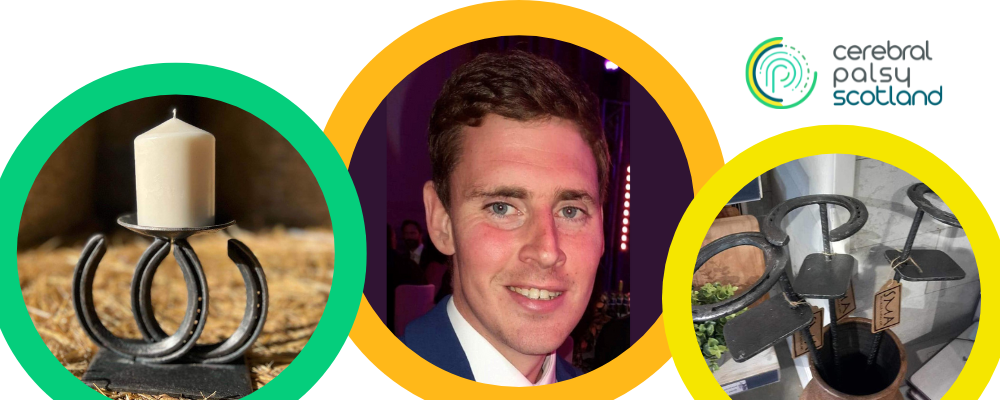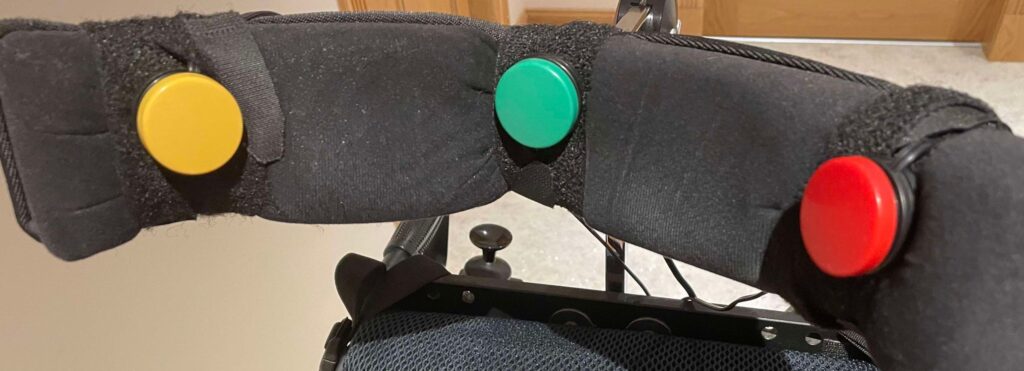Being a teenager with Cerebral Palsy isn’t easy, especially when your physical differences set you apart from your peers. From a young age I knew I was different. I could tell other people didn’t walk like me, no one I knew had four surgeries by the time they were twelve. As far as I was concerned, my experiences made me a much more interesting person. My friends viewed me in the same way as they viewed everyone else, albeit with some extra bits so they could help me when I needed. The progression from child to teenager had its challenges, as it always does, but I wasn’t prepared for the changes I faced. I assumed starting High School would be a completely average experience. I was aware I might be more tired than everyone else, but I was ready for something new and to educate a whole new set of people. However, the first few weeks brought me sharply back to reality. Almost no one asked questions. Instead, they just stared. Rapt with confusion, questioning, and possibly a little jealousy over my treatment from teachers. It was obvious they were judging me before I even got a chance to introduce myself.
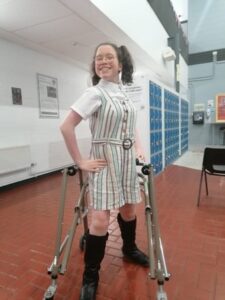
I knew I needed to find a way to put myself out there, to make it clear to my peers I was just as capable as them. I tried a few things, desperately trying to fit in at sports clubs, but nothing felt right. A few months into the year, a friend suggested I audition for the summer musical. I’d never considered it before. Our stage had stairs, and I really didn’t want to tire myself out trying to use them, but I kept hearing about how much fun everyone else was having. Eventually, I gave in, agreeing to go on a temporary basis in case it was awful. Little did I know, it would change the way I viewed myself forever.
When audition week came round, I was relatively confident. We were doing a junior production of Anything Goes, and I had spent the last week listening to the soundtrack on repeat, memorising every line. I’d never had issues with performing in front of people, so I wasn’t nervous. Until I was standing outside the studio doors, listening to the seasoned senior performers belting out the lead role, moving around and gesturing as they did so. In that moment, I felt like an outsider. I knew my legs couldn’t carry me the way theirs did. I had never really danced before, and I knew I was going to stick out regardless of how hard I tried. That audition resulted in me missing my cue three times and being given a bit part in the ensemble. After that day, I was ready to give up. Clearly, I wasn’t up to the task, and I should just stick to what I knew. But something about seeing my name on the cast list made me go back, week after week, putting everything I had into my tiny role. Rehearsals were rocky. I could only take part for half an hour or so before my body betrayed me, and I was forced to sit down. As I watched from the back of the hall, massaging my calves and hoping for the pain to subside, I was taken back to all the times I’d been sidelined in PE, or had to explain myself so I could get out of something difficult. It hurt to watch my friends easily coping with hours upon hours of intense routines so easily, but watching them also gave me a glimpse of what I could be part of. I could see the familial relationship the cast had built, I was involved in something special. I celebrated my thirteenth birthday on stage, a jovial piano version of ‘happy birthday’ being performed enthusiastically by the cast and crew. As I stood, awkwardly dancing along, I felt truly accepted for the first time that year.
As show week approached, tensions were high and I was getting worried. So many things could go wrong, I was reliant on others helping me on and off stage. A ramp has been installed as soon as I mentioned stairs would be an issue, but it was affectionately referred to as ‘the ramp of doom’ or ‘danger ramp’, so I still had to be careful. What if I couldn’t costume change in time? What if I didn’t make it on stage, or god forbid, fell over? On the first performance night, I was absolutely bricking it. I knew I’d have eyes on me regardless of what I was doing, and wasn’t sure how to feel about it. The worry was constant, until I was standing in the wings. I saw the audience chattering excitedly, my parents and friends in the front row for moral support. Seeing the turnout for something we had created eased the tension slightly. When the opening music started and I strutted on stage, I made a decision. This was my character, my time to shine, and I was going to make sure people were staring at me for the right reasons.
As the curtain fell on closing night, I stood, stunned, in the middle of the stage. People were laughing and crying and hugging each other, and I think I was too. I don’t remember much of that night. All I know is that I couldn’t believe what I’d just done. High on adrenaline, I chattered excitedly all the way home. I was elated, until the excitement wore off. That night, I sat in bed crying. Not because I was upset, but because I was emotionally and physically exhausted. All of it was so intense and after a month of eating, sleeping and breathing theatre, my body finally caught up.
The next year, it took no convincing for me to go back. I knew it was going to be difficult. Our production of Sunshine on Leith was nearly three times as long as the year before, but I couldn’t wait. I strode into the audition room with great confidence, landing a few small parts which I performed with gusto. The process was much the same as the year before, except I wasn’t needed as much so I could sit out without feeling too drained. That show week was one of the best of my life. The songs were upbeat and everyone was so happy to be there. The students in their final year were a little emotional, but we kept it under control (just), until the last night. Standing in the wings, listening to the emotional rendition of ‘Sunshine on Leith’, I finally broke. I was so unbelievably proud of what we’d created as a group, and what I’d managed to do despite the barriers I was constantly faced with. Of course, explaining that was difficult, no one else quite understood the magnitude of the moment. I had to put on the best performance of my life that night, delivering my lines tear – stained and tired. Like a chain reaction, everyone became progressively more emotional and by the final number, we were sobbing our way through a high energy dance, cry – laughing through the speeches and collapsing in a pile of tears and bodies as the curtain closed.
We always had photos taken on show days. I wasn’t used to having candids taken of me. My walking frame was usually met with backlash from photographers claiming it ruined their lighting, but I knew this time would be different. Our photographer was another wheelchair user, so they completely understood my situation. When those photos were published, I couldn’t believe it. It was really me up there, frame and all, finally standing out because I wanted to and not against my will. People congratulated me in the corridors, my other disabled friends in the audience were beside themselves when they saw me. They finally had real teen representation on stage, and they loved it.
After our most recent show, Matilda, I was less tired than usual. I had a larger role as Mrs Phelps the librarian, and used my wheelchair as a result of injury. It was scary, but it did mean I’d conserved some energy. Much more friendly with the leaving members, I made sure to be right in the middle of the celebrations. They were some of my biggest cheerleaders, happy to spend their time in between scenes lugging my chair up and down the stairs. As we stood and hugged each other, linking hands in the obligatory post – show circle, I felt almost peaceful. These people had shaped my high school experience, they saw me for me. Yes, I still had CP, I always will, but I was Abby who did the school show, and had CP. It was part of me, but not my defining factor. That first night on stage, I discovered what inclusion should be. I felt valued, important, and equal in my own way.
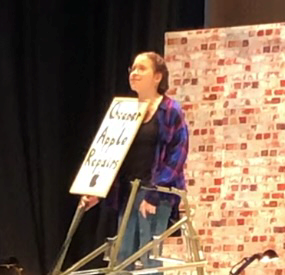
To any teenagers with CP, I see you. I know it’s difficult, and we’ll never stop fighting for the basic rights we deserve, but I also know that it gets better. There are people out there for everyone, and there is always something you were meant to be part of. You deserve to have teenage experiences, regardless of ability, and I guarantee there is someone out there who will benefit from seeing you thrive. I wouldn’t be where I am today without our shows. I’m lucky to have so many amazing people around me, and I’m so grateful for the teachers who were willing to put their faith in me and offer support every step of the way. Theatre has been a major confidence boost for me, and I’ll forever be proud of the girl who took the plunge and decided she was worth fighting for.


